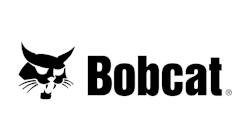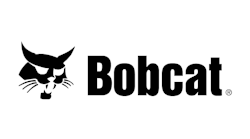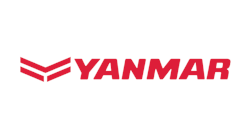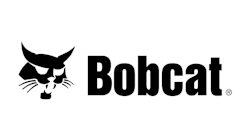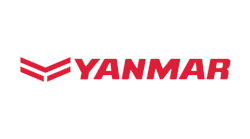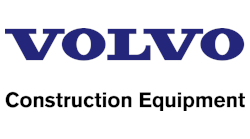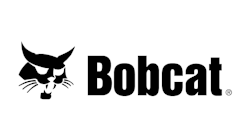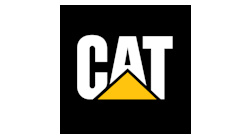Compact tractor-loader-backhoes (TLBs) just like skid steers remain versatile, adaptable equipment on job sites. Their many attachments can even be swapped between these two machines. But there is a point where one may be a better fit over the other.
The TLB in the compact version digs to depths of less than 12 feet. Horsepower is not greater than 80. Especially beneficial are maneuverability and the weight of the equipment. Compactness enables machinery to relocate efficiently through tight spaces, all around the job site, easily switching from one job to another.
Compact track loader backhoes are particularly appropriate for jobs in small spaces and on sites where it is necessary to protect the turf from damage. These machines are typically used on all kinds of different job sites. For instance, TLBs prove a great fit at construction and demolition sites, operated by nursery maintenance, landscaping, and other workers, as well as at utility and recycling repair companies.
Municipalities favor tractor-loader-backhoes for their skillfulness and speed; city workers by design typically must multitask on job sites. accomplish many different kinds of tasks at a variety of job sites. Use can be made of numerous assorted attachments for specific tasks. This work vehicle's speed allows individuals to drive them from site to site. TLBs sometimes cannot fit into spaces that the skid steer can, however, may be a better option as less damage happens to turf and other less compacted surfaces.
The skid steer and compact track loader backhoe have a lot in common, however, they are still very different machines. Skid steers excel at the job they were primarily intended for, handling debris with a loader. However, when moving between multiple nearby job sites is involved, the compact track loader backhoe is faster on the road. This means a lot for those doing jobs such as preparing homesites for a neighborhood development; the compact TLB can be driven quickly between jobs, saving transport time.
The bottom line remains that skid steers have available attachments for almost any, job the total package. This cannot be said of the compact track loader backhoe, which comes with just a front-end loader and backhoe. Yet compact track loader backhoes have more maneuverability in large areas; skid steers are more compact for tight spaces.
Both skid steers and compact TLBs are great choices. To decide which is best for your job, appraise the job site, tasks that need to be accomplished, and time constraints. With an open job site and multiple tasks, the track loader backhoe will be a time saver. With a tighter job site or the need to change job sites frequently to accomplish the same task, a skid steer will get the job done faster and more efficiently.
Cost-Effectiveness for Site Managers
For those wondering just how useful or helpful the compact TBL equipment may be, Matt Walker, product manager with Kubota Tractor Corporation has an answer. “The Kubota B26, L47, and M62 are versatile, compact, highly mobile machines built for the independent contractors, landscapers, and rental services.
“The B26 is an especially innovative compact tractor/loader/backhoe with 24.3 engine horsepower, integrated loader and quick detach backhoe. The L47 sports a Hydrostatic Transmission, packed with a 47.1 horsepower engine, ideal for rental users, contractors, landscapers, and homeowners seeking professional results. The M62 is powerful with a 63 horsepower engine offering professional results on everything from landscaping jobs to general construction sites.
“When it comes to job site advantages, this equipment – all models of the Kubota TLB line to be exact – have the versatility of removing the backhoe and installing a 3-point hitch option. This 3-point hitch will allow the use of any type of three-point mounted equipment commonly used on tractors today.”
Therefore, a box blade, angle blade, mower, and many more items may be operated from the rear of the tractor, a good fit when used for many different applications. “But Kubota’s versatility is not only demonstrated at the rear of the TLB,” explains Walker. “The Kubota-designed and built, performance-matched front loaders are robust enough to tackle any job. Kubota’s 2-lever quick coupler lets users quickly and easily attach and detach front implements.
“With the optional hydraulic 2-lever quick coupler, operators won’t even need to leave their seat,” adds Walker. “Simply press two buttons to release the levers, back away from the now-detached implement, move into the next implement, and press the buttons to re-engage the levers. Our customers find that changing implements could not be easier.”
The Kubota Tractor-Loader-Backhoe or TLB can do the work of three, doing it well. "This is an efficient front loader that can run multiple attachments such as pallet forks, sweepers, and a four-in-one bucket shows the skillfulness in the TLB that can help reduce rental equipment costs and accomplish more tasks on the job. The Kubota TLB's have an engine that provides great fuel economy while delivering high levels of power and torque."
The operator will save on fuel costs but remain productive on the job. Coupled with the front loader, the backhoe gives site managers another level of production and efficiency. The quick-hitch system makes changing attachments on the backhoe quick and easy, saving time and money. Also, on the M62 and M47 model TLBs, operators will find backhoe crawling mode, saving time when repositioning during backhoe operation keeping the operator productive.
They are easy to operate, according to Walker. "All Kubota TLB models are purposely designed with the operator experience in mind. Every control panel is marked and ergonomically arranged to make both the novice and experienced operator feel at home as quickly as possible, maximizing productivity and efficiency. Such intuitive operating experience makes the Kubota TLB lineup ideal for rental users, contractors, landscapers and homeowners."
The latest advancements in the equipment's technology and design, incorporate the best of Kubota’s advanced technology in both machine performance and operator comfort. The HST-Plus transmission, standard on the B26, L47, as well as the M62, provides precision performance accomplished through automatic control of the hydrostatic pump and drive motor giving the operator optimal performance.
Also on the L47 and M62 Kubota TLBs, the IntelliPanel provides operators with all of the vital machine information to keep the TLB in peak working condition for maximum productivity. The IntelliPanel relays key messages to the operator, including machine working status, engine conditions, fuel and oil warning signals, plus an array of maintenance indicators.
The general trend within the TLB market, as with most machinery markets, is for more powerful machines while maintaining an attractive and competitive price point. “I consider this as the place where Kubotas can really show their power The Kubota B26, L47 and M62 models all offer versatile, compact and powerful TLB solutions for contractors and rental customers alike.
But power is not only about engine HP. With a productive front loader and powerful tractor, Kubota’s M62 TLB offers contractors even greater excavating ability than its predecessors, with a 14-foot digging depth, a 17-percent improvement over the previous generation’s 12-foot max depth. The M62 has a bucket digging force of 6,572 pounds while the L47 boasts a 10-foot digging depth and a bucket digging force of 5,825 pounds.
Another technology now being used on Kubota’s engines is a feature called the Common-Rail direct injection system to reduce emissions and increase fuel economy all while maintaining high levels of power and torque. On the L47 and M62, operators will find the Hydrostatic Transmission Plus featuring precision and automated control of the HST pump and drive motor for optimal operator performance.
Backhoe Crawling Mode, also available on the L47 and M62, saves operators time when repositioning during backhoe operations. The backhoe crawling mode allows the operator to creep forward or backward with the touch of a finger while remaining at the backhoe controls.
"The Kubota TLB series is the perfect partner for landscaping, rental and contractor operations, not only for the power, flexibility and performance each model delivers on the job site as we've discussed but these TLB's are easily transported. Even with both loader and backhoe attached, the compact B26 and L47 can be loaded on a 10,000-pound GVWR rated trailer pulled by a 3/4-ton pickup truck, letting you quickly and efficiently move to the next job site. This is the situation in most states."
Getting the right equipment, the right brand for the task
Greg Nichols, sales manager with the Nelson Tractor Company, admits that compact TBLs are probably not going to beat out skid steers or excavators on some jobs anytime soon. “But they do show up where landscapers are doing their work much of the time,” explains Nichols. “There is a reason for this and even homeowners may have a use for a sub-compact TBL, a 23-horsepower tractor with the loader backhoe tool for working around the house – especially great for small jobs.”
If an operator gets into the construction site where they are clearing out land or digging basements, in those cases of course the sub-compact is simply too small a tractor, according to Nichols. "We have traditionally been involved with the three main brands, Kubota, John Deere, and New Holland. It all depends on which dealer carries which equipment and the search for the brand best for that particular customer.
“I have sold all three of them. Now it's just Kubota and New Holland. But as with the others in the sub-compact size, they are all great tractors. We sell a lot of the New Holland and Kubota. Everyone has their opinion on which company has the best equipment.”
As mentioned earlier, homeowners typically use the sub-compact TLBs. In the compact models, they can attach a backhoe to their tractor. Larger property owners have those, as do landscapers. "Tight areas mean that a small TBL is needed. Of course, it depends on just what the owner of the equipment is involved in.
"If you are clearing land, doing work such as this, an excavator is useful of course. But a TLB is invaluable in getting work done as well. An industrial-grade TBL weighs some 20,000 lbs. A skid steer or excavator weighs much less and can be transported in several trips."
However for site managers trying to make a living, having too small a piece of equipment can also be counter-productive, adds Nichols. "You do want to have the right tools for the job. In my business, I can guide them toward what is the best equipment for them to use. For digging a long trench, for instance, a mile in length, an excavator is not going to do the job very fast. A sub-compact TLB will be too small. But a compact TLB or even a regular-sized TLB may be the best fit."
Nichols suggests users be completely acquainted with their machine before use. "Be familiar with your equipment. Know what this particular piece can and cannot do. When customers come in we find out their needs as well. We may tell them this piece works better than that, figuring out what does the job best.
“Drive it around. See what it feels like. But once we've prepped that machine we deliver it to the customer. Our drivers in turn show them even more. We spend an hour of our time with a client to make sure that they are familiar with the equipment.”
Telematics has proved invaluable in keeping up with maintenance on the machines – especially when that specific piece has multiple operators. The owner is then able to see the data and insure service to his investment takes place. This feature is new for the Kubota products. “My advice for any buyer is to make sure you are getting what you need,” adds Nichols. “Be careful of that.”
Solidly Built Multi-Functional TLBs
NC Tractor and Farm Supply, Rutherfordton, North Carolina, handles Massey Ferguson compact TLBs. “The 23 is our biggest seller,” explains Phil Sheehan, general manager. “We can add a backhoe attachment to any of our machines. But the compact TLB already comes equipped with a backhoe.
"The unit has four-wheel drive and hydrostat: just pedal forward and pedal backward. The backhoe has a separate brake on the back as well."
The company sold 47 compact TBLs last year according to Sheehan, who adds that the machinery has uses all around the house, farm, or wherever it may be needed. “Whatever it is that people are using them for, they are getting hard to find this year. This, I suppose because they were so popular last year. The 1723 we had in inventory sold out. On job sites they are versatile.”
The equipment is small. These pieces of equipment can get around in places where the larger ones cannot. “I have had one on my farm and it has been a real lifesaver for me, helping with digging ditches, pulling trees up. Mine has a skid steer bucket on the front of course. This can be removed say if I needed to put some pallet forks on the front for a different job."
His model comes equipped with a metal hood as opposed to plastic. “If you crack your hood you could end up paying five or six hundred dollars to replace it. The Massey Ferguson is more durable in that area.”
When they deliver the customer's equipment to their home or business, NC Tractor will demonstrate how it's operated. After the first 50 hours of operation, the oil and filter must be changed. After that, service must be done at the 150-mile mark. The front ends of the machine have been made more durable. They handle more weight. As with others mentioned here, technology has been improved.
“This tractor-loader-backhoe runs on diesel fuel and it's really just a little workhorse. One attachment enables a grass mower to be used. I can say from personal experience and owning my own compact TBL that the main advantages include variety in functions, skillfulness, ease of use, durability – also the power these compact TBLs have."
Switching Equipment Is a Snap
John Deere's compact TBL has experienced changes in technology. What Joel Toates, sales manager with Carolina Lawn and Tractor, Inc. Taylors, SC finds especially useful is the thumb control that works on the bucket attachment.
"In the last five years, there have also been lots of changes electronically on our units. On our TBLs the thumb control lets the bucket come down and grab hold of a pipe, tree trunk, or tree limb, etc. This is analogous to your forefinger and thumb coming together to grasp something.
“That's a feature that's been on big backhoes for awhile. But in the last two years that has come down to be a feature included on the compacts as well. What a tremendous help in being able to grab something and pull it up from the ground.”
Toates has sold John Deere equipment for 36 years. “Just to clarify differences in equipment, a skid steer loader and front end loaders will lift more weight than a compact TLB,” adds Toates. "But with the TLBs you still have a three-point hitch. This enables the attachment to be removed in some two to five minutes. With the loaders, the same thing applies. They come off very quickly as well."
Toates asserts that the chief reason someone would purchase a TBL is due to its versatility. This piece has the front end loader and a place for attachments such as a posthole digger. For site managers, this is especially varied-use machinery.
“If you need the three-point hitch to do other jobs, backhoe tasks, this can do those, as well as bush-hogging to clear wildly overgrown land. All the different options may make this a better fit for work on your job site much of the time.
“Somebody with an average level of coordination could grasp how it's used, pretty quickly,” adds Toates. “That is the compact tractor-loader-backhoe. And switching from backhoe to three-point hitch now takes a few minutes, compared to 20 years ago. At that time 30 minutes and at least two people were required for backhoe removal; now, it's one person in a matter of minutes.”


